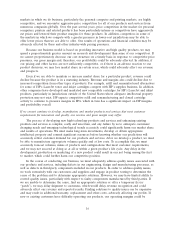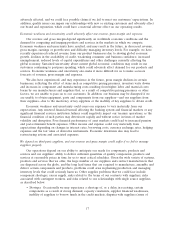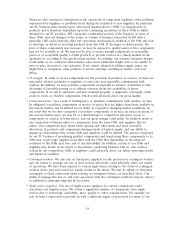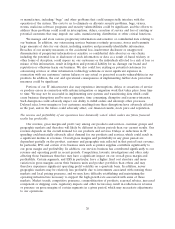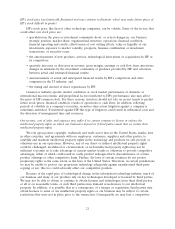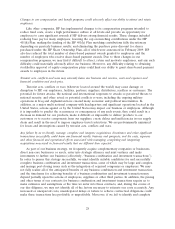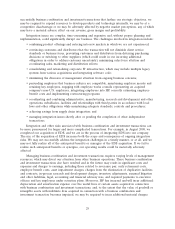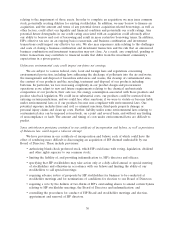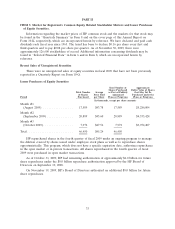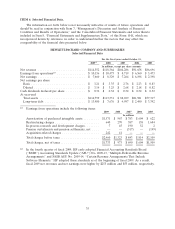HP 2009 Annual Report Download - page 32
Download and view the complete annual report
Please find page 32 of the 2009 HP annual report below. You can navigate through the pages in the report by either clicking on the pages listed below, or by using the keyword search tool below to find specific information within the annual report.of these risks materializes, future demand for our products and services and our results of operations
may suffer.
Our revenue and profitability could suffer if we do not manage the risks associated with our IT services
business properly.
The size and significance of the IT services portion of our business has increased in recent periods.
The risks that accompany that business differ from those of our other businesses and include the
following:
• The pricing and other terms of some of our IT services agreements, particularly our long-term
IT outsourcing services agreements, require us to make estimates and assumptions at the time
we enter into these contracts that could differ from actual results. Any increased or unexpected
costs or unanticipated delays in connection with the performance of these engagements,
including delays caused by factors outside our control, could make these agreements less
profitable or unprofitable, which would have an adverse affect on the profit margin of our IT
services business.
• Some of our IT services agreements require significant investment in the early stages that is
expected to be recovered through billings over the life of the agreement. These agreements
often involve the construction of new IT systems and communications networks and the
development and deployment of new technologies. Substantial performance risk exists in each
agreement with these characteristics, and some or all elements of service delivery under these
agreements are dependent upon successful completion of the development, construction and
deployment phases. Any failure to perform satisfactorily under these agreements may expose us
to legal liability, result in the loss of customers and harm our reputation, which could decrease
the revenues and profitability of our IT services business.
• Some of our outsourcing services agreements contain pricing provisions that permit a client to
request a benchmark study by a mutually acceptable third- party. The benchmarking process
typically compares the contractual price of our services against the price of similar services
offered by other specified providers in a peer comparison group, subject to agreed upon
adjustment and normalization factors. Generally, if the benchmarking study shows that our
pricing has a difference outside a specified range, and the difference is not due to the unique
requirements of the client, then the parties will negotiate in good faith any appropriate
adjustments to the pricing. This may result in the reduction of our rates for the benchmarked
services performed after the implementation of those pricing adjustments, which could decrease
the revenues and profitability of our IT services business.
If we fail to comply with our customer contracts or government contracting regulations, our revenue could
suffer.
Our contracts with our customers may include unique and specialized performance requirements.
In particular, our contracts with federal, state, provincial and local governmental customers are subject
to various procurement regulations, contract provisions and other requirements relating to their
formation, administration and performance. Any failure by us to comply with the specific provisions in
our customer contracts or any violation of government contracting regulations could result in the
imposition of various civil and criminal penalties, which may include termination of contracts, forfeiture
of profits, suspension of payments and, in the case of our government contracts, fines and suspension
from future government contracting. In addition, we are currently, and in the future may be, subject to
qui tam litigation brought by private individuals on behalf of the government relating to our
government contracts, which could include claims for up to treble damages. Further, any negative
publicity related to our customer contracts or any proceedings surrounding them, regardless of its
25



